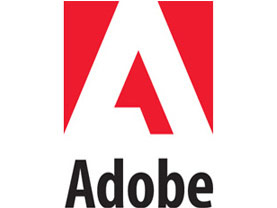Last week Adobe announced to the world that it is aware of the fact that its Adobe Download Manager software application is plagued by a vulnerability that could allow for remote code execution if successfully exploited by a person with malicious intent.
It all started with security researcher Aviv Raff who initially uncovered a design flaw on Adobe’s site that allowed “the abuse of the Adobe Download Manager to force the automatic installation of Adobe products, as well as other software products.” After Adobe was informed about this issue and downplayed the discovery, Aviv Raff then uncovered a remote code execution flaw in Adobe Download Manager that could allow an attacker to force an automatic download and installation of any executable that attacker wants.
Since then the California-based company that specializes in creating multimedia and creativity software products has been working with Aviv Raff to resolve the issue. And now that fruits of their labor have come to light. Adobe has posted a security bulletin in which it says the following:
“Users, who have downloaded Adobe Reader for Windows from http://get.adobe.com/reader/ or Adobe Flash Player for Windows from http://get.adobe.com/flashplayer/ prior to the release of this Security Bulletin on February 23, 2010, can verify they are not vulnerable to this Adobe Download Manager issue by following the instructions below:
It all started with security researcher Aviv Raff who initially uncovered a design flaw on Adobe’s site that allowed “the abuse of the Adobe Download Manager to force the automatic installation of Adobe products, as well as other software products.” After Adobe was informed about this issue and downplayed the discovery, Aviv Raff then uncovered a remote code execution flaw in Adobe Download Manager that could allow an attacker to force an automatic download and installation of any executable that attacker wants.
Since then the California-based company that specializes in creating multimedia and creativity software products has been working with Aviv Raff to resolve the issue. And now that fruits of their labor have come to light. Adobe has posted a security bulletin in which it says the following:
“Users, who have downloaded Adobe Reader for Windows from http://get.adobe.com/reader/ or Adobe Flash Player for Windows from http://get.adobe.com/flashplayer/ prior to the release of this Security Bulletin on February 23, 2010, can verify they are not vulnerable to this Adobe Download Manager issue by following the instructions below:
- Ensure that the C:Program FilesNOS folder and its contents ("NOS files") are not present on your system. (If the folder is present, follow the steps below to remove).
- Click "Start" > "Run" and type "services.msc". Ensure that "getPlus(R) Helper" is not present in the list of services.
- Navigating to Start > Control Panel > Add or Remove Programs > Adobe Download Manager, and selecting Remove to remove the Adobe Download Manager from your system.
- Clicking "Start" > "Run" and typing "services.msc". Then deleting "getPlus(R) Helper" from the list of services.
- Then delete the C:Program FilesNOS folder and its contents."

























